Stop London in its Tracks
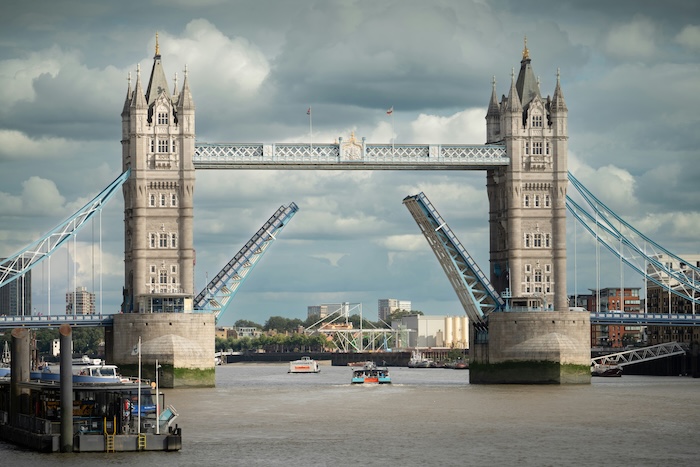
Tower Bridge, one of London’s most iconic landmarks and not to be confused with the far less iconic London Bridge, regularly opens to allow shipping traffic to pass underneath. Any vessel taller than 30ft (9m) wishing to pass under the bridge can request a lift by emailing bridgelifts@towerbridge.org.uk at least 24 hours in advance.
The lifting of the bridge is free for vessels and has been so since the bridge opened in 1894. Tower Bridge and four other bridges in London are managed by The City Bridge Foundation (known as Bridge House Estates until 2023) a charity that has been managing London bridges since 1176 using its massive £904 million endowment and income from ticket sales to Tower Bridge’s walkways and engine room, and use as a venue for hire.
Once up river of Tower Bridge there is almost nowhere to go for tall vessel as any vessels taller than 9.9m will be unable to pass under the highest arch of the next bridge, London Bridge, at high tide. Instead vessels can either moor at Tower Pier, alongside the HMS Belfast (as visiting cruise ships, private yachts and ships from other countries’ navies sometimes do), or turn around and go back under Tower Bridge. The list of vessels requesting an upcoming lift is publicly available
Using data from this github repo that has been scraping upcoming lifts since 2020, between the 6th of May 2021 and the 6th of May 2025 there were:
- 3,093 total lifts
- 273 lifts for maintenance of the bridge
- 2,820 lifts for vessels
- 1,398 for vessels heading down river (East) and 1,422 up river (West)
The lifts are very seasonal, with summer being the most popular time for lift openings, and July 2022 the most popular month in the last four years, with 162 lifts:
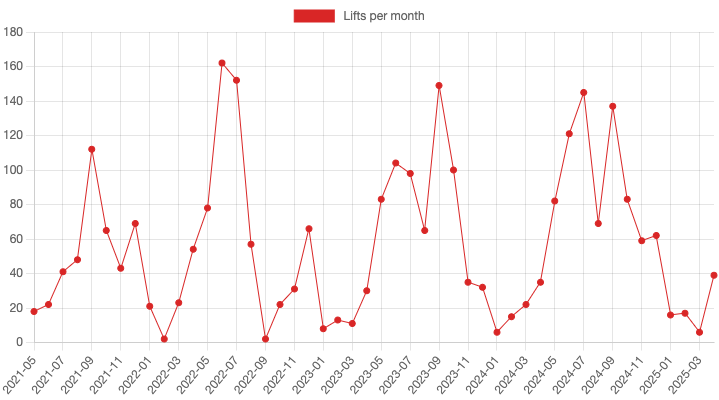
Of the 2,820 lifts for vessels in the past four years, 1,820 (65%) were requested for only three vessels:
- Paddle Steamer Dixie Queen, with 791 lifts
- Sailing Barge Will, with 599 lifts
- Sailing Barge Gladys, with 430 lifts
When not in use, Dixie Queen is usually moored just down river of the bridge, at Butler’s Wharf Pier on the south bank. Sailing Barge Will is often moored at Hermitage Community Moorings on the north bank just down river of the bridge, but according to their website typically picks up passengers at Tower Pier slightly up river of the bridge next to the Tower of London, also on the north bank. Sailing Barge Gladys is usually moored in St Katherine’s Docks, just down river of the bridge on the north bank.
Sailing Barge Will and Sailing Barge Gladys are traditional Dutch sailing barges, with folding masts that pivot at the boom to enable them to easily navigate low tunnels and bridges. You can see Gladys’ mast in the folded down position in this photo on T. Nielsen & Company’s website, the company that restored Gladys in 2018:
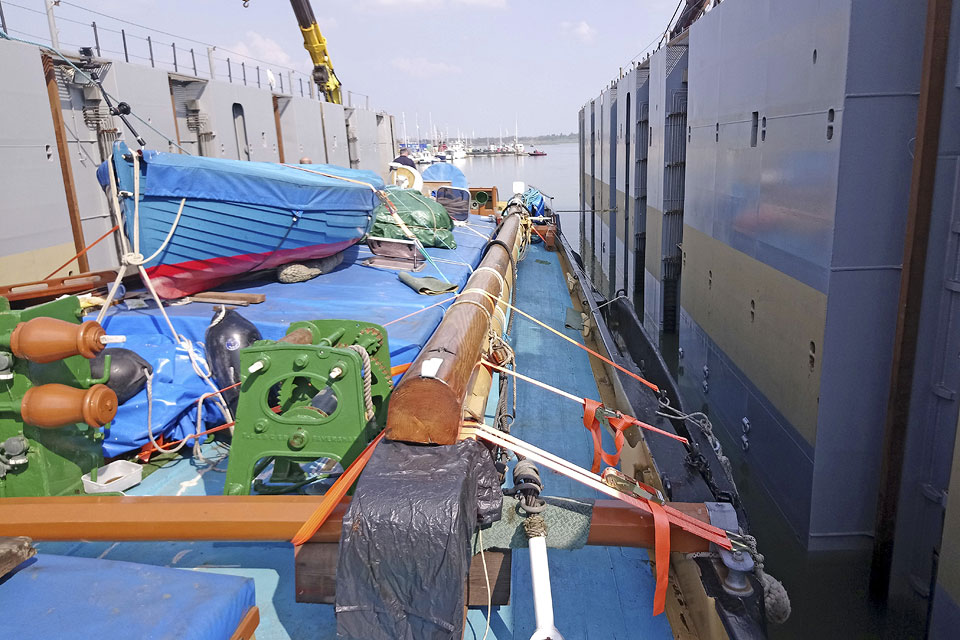
Unfortunately, these boats seem to exist solely for charging passengers for the spectacle of the bridge opening. Sailing Barge Will is the most egregious of all, promising clients they can “STOP LONDON IN ITS TRACKS!”, despite its folding mast:
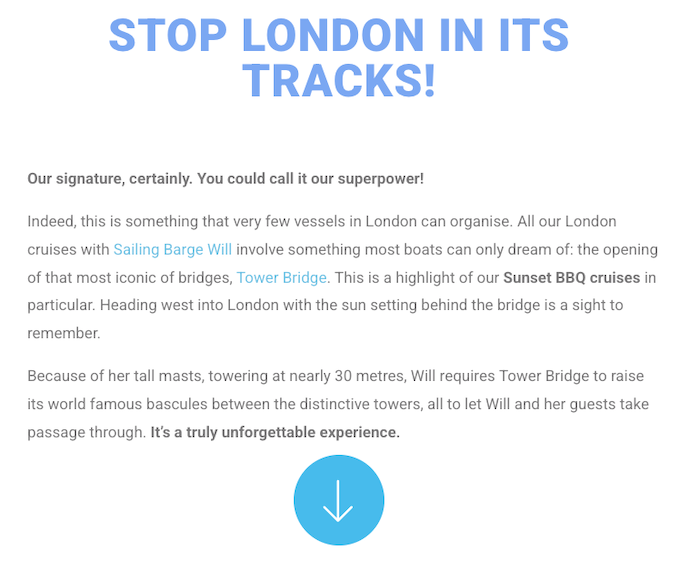
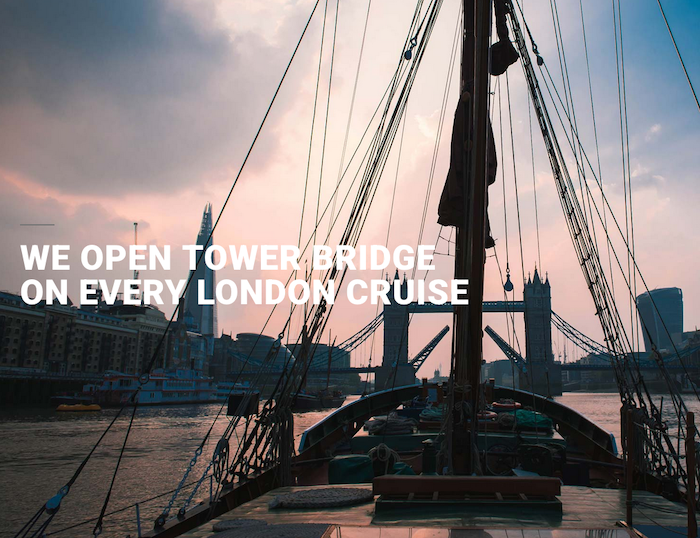
Tower Bridge is an important cross-river connection in East London, which has a paucity of crossings compared to Central and West London, particularly for pedestrians and cyclists, who are unable to use the Rotherhithe, Blackwall, and Silvertown tunnels.
Data from an FOI request from January 2024 for a sensor on Tower Bridge Road just south of the bridge shows that on an average day in 2022 the bridge was used by:
- 8,286 cars
- 2,030 cyclists
- 3,643 large goods vehicles
- 186 buses
This traffic is typically disrupted for 8 minutes by each opening.
Although these commercial vessels get to close Tower Bridge Road multiple times a day for free, generally it is far more expensive to stop London it its tracks by closing a road. The City of London, on the north side of the bridge, requires 12 weeks notice and a fee of £3,750 for temporarily closing a road used by buses. Southwark on the south side, by contrast, only charges £2,717.